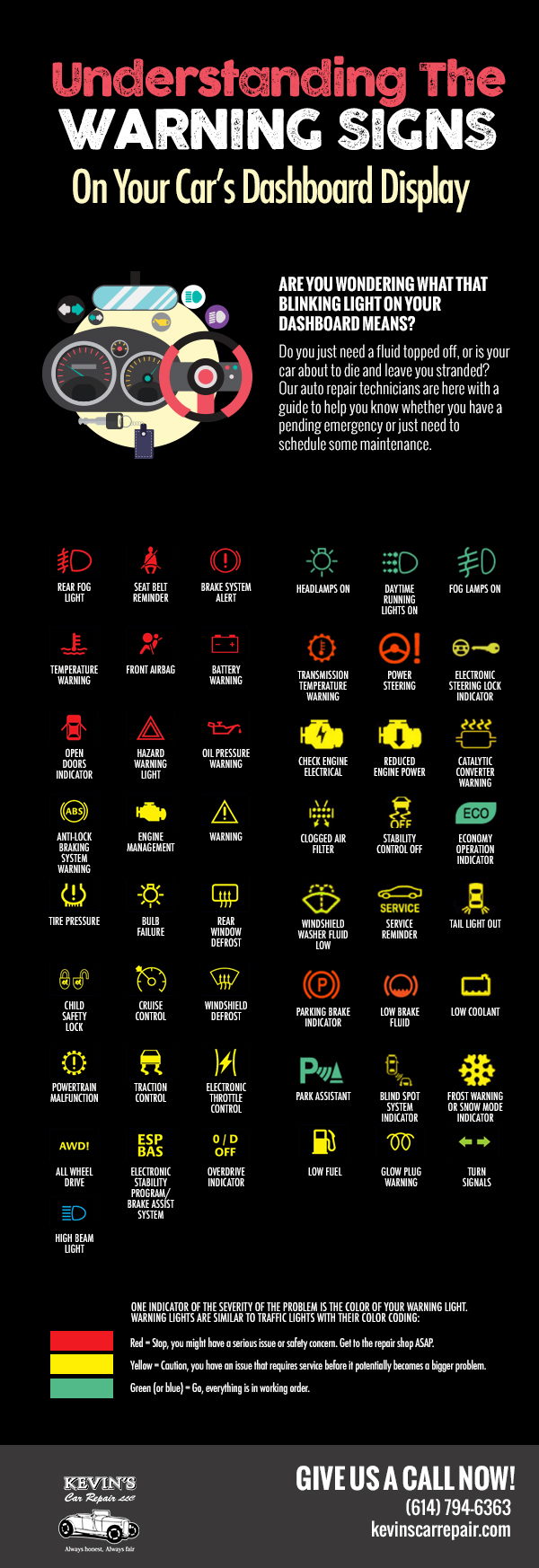Interpreting Your Vehicle'S Alert Lighting: Their Real Ramifications
Interpreting Your Vehicle'S Alert Lighting: Their Real Ramifications
Blog Article
Post Created By-Lim Kejser
When you lag the wheel, those glowing warning lights on your dashboard can be a bit complicated. Do you recognize what they're attempting to inform you regarding your automobile's health and wellness? Recognizing the importance of these lights is important for your safety and security and the longevity of your automobile. So, the next time one of those lights pops up, wouldn't you intend to analyze its message accurately and take the needed actions to resolve it?
Common Caution Lighting and Interpretations
Recognize usual warning lights in your cars and truck and recognize their meanings to ensure secure driving.
The most regular caution lights include the check engine light, which signifies problems with the engine or discharges system. If this light begins, it's critical to have your lorry inspected without delay.
The oil stress cautioning light indicates reduced oil stress, calling for prompt attention to stop engine damage.
A blinking battery light could recommend a defective charging system, possibly leaving you stranded if not dealt with.
The tire pressure surveillance system (TPMS) light informs you to low tire pressure, affecting car security and fuel effectiveness. Disregarding https://www.chattanoogan.com/2022/4/10/446930/East-Lake-Auto-Repair-Shop-Damaged-And.aspx could bring about unsafe driving problems.
The abdominal light shows a problem with the anti-lock stopping system, endangering your capability to quit promptly in emergencies.
Lastly, the coolant temperature level cautioning light warns of engine overheating, which can cause extreme damages if not settled quickly.
Understanding these usual warning lights will certainly aid you deal with problems immediately and maintain safe driving problems.
Significance of Prompt Attention
Recognizing the common caution lights in your automobile is only the primary step; the significance of quickly dealing with these cautions can not be emphasized sufficient to ensure your safety when driving.
When a caution light brightens on your control panel, it's your auto's means of communicating a prospective issue that needs interest. Ignoring these cautions can result in extra severe troubles later on, jeopardizing your security and possibly costing you a lot more out of commission.
Prompt focus to warning lights can protect against failures and crashes. For instance, a flashing check engine light can suggest a misfire that, if left neglected, can create damage to the catalytic converter. Addressing this without delay can conserve you from a costly repair.
Similarly, Recommended Reading warning light might signify reduced brake fluid or used brake pads, essential elements for your safety when driving.
DIY Troubleshooting Tips
If you see a caution light on your control panel, there are a few do it yourself troubleshooting suggestions you can try prior to seeking specialist help.
The primary step is to consult your auto's guidebook to recognize what the particular caution light suggests. In some cases the concern can be as easy as a loosened gas cap causing the check engine light. Tightening up the gas cap may fix the issue.
Another typical problem is a reduced battery, which can cause numerous cautioning lights. Inspecting the battery connections for rust and guaranteeing they're safe and secure might repair the issue.
If a warning light continues, you can attempt resetting it by detaching the vehicle's battery for a couple of minutes and then reconnecting it. Furthermore, inspecting your automobile's fluid degrees, such as oil, coolant, and brake fluid, can help troubleshoot cautioning lights related to these systems.
Conclusion
Finally, recognizing your automobile's caution lights is necessary for keeping your lorry running efficiently and securely. By promptly resolving these alerts and understanding what they indicate, you can avoid costly repair work and prospective breakdowns.
Bear in mind to consult your cars and truck's handbook for specific information on each alerting light and do something about it as necessary to make certain a hassle-free driving experience.
Stay informed, stay risk-free on the road!
